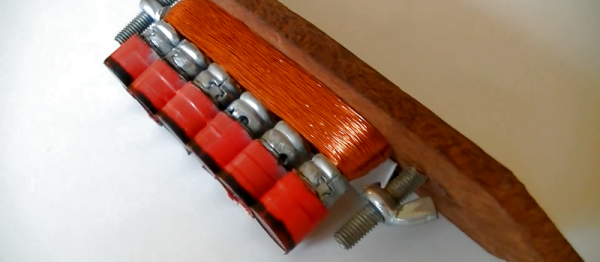We’ve seen musical Tesla coils aplenty on these pages before, and we’ll be the first to point out that [Kedar Nimbalkar]’s musical high-voltage rig doesn’t quite qualify as a Tesla coil. But it’s dirt cheap, and might make a pretty cool rainy-afternoon-with-the-kids project.
Chances are good you have the parts needed for this build lying around the house. All that’s needed is an audio power amplifier and a high-voltage source. [Kedar] used a Class D amp board and a 3V to 7kV high-voltage module sourced from eBay for a couple of bucks; if you really want to go cheap, tear down that defunct electronic fly swatter gathering dust on top of your fridge and harvest the high-voltage module inside. The output of the amp feeds the high-voltage module, the HV leads are placed close together to get an arc, and the glorious high-fidelity sound will wash over you. Or not – sounds pretty awful to us. Still, it looks like a fast, fun build.
If this project gets you in the mood to go the full Tesla, check out this coil big enough to produce 12-foot arcs, or even this musical Tesla hat.
Continue reading “Bare-bones Musical Tesla Coil Is Tiny And Tinny”

















